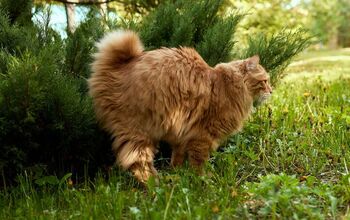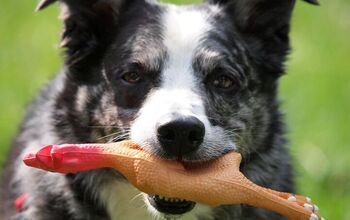Westiepoo


About Westiepoo
There are many reasons why breeders pair together breeds to create hybrid pups. However, the most popular of these dogs tend to be created due to a combination of adorable aesthetics and a lovable personality. The Westiepoo is one such hybrid. A designer dog so unbelievably beautiful and charming that the little balls of fluff are impossible to resist.
A fluffy, cute pooch with a fantastic personality, the Westiepoo is among the more popular designer dog breeds for good reason. This sturdy little hybrid is a happy, family oriented dog that loves to be around others and gets along famously with household pets and older kids. He’s a terrific companion dog and his compact stature and minimal shedding make him a great fit for apartment dwellers. In other words, this is a dog that will fit into almost any home with ease. Why is this dog such a crowdpleaser? It’s all thanks to this beloved doggo’s unique lineage.
Also known as Westiepoo, Westiedoodle or Wee-Poo this designer dog breed hails from quite special origins. His parents are the West Highland White Terrier and the toy (or miniature) Poodle. This combination of two small, smart, and low-shedding dogs results in a compact canine that has proven to be a great companion for countless different types of pet owners. From singles to families and seniors, there seems to be a general consensus that these cute dogs are wonderful companions. Once you let a Westiepoo into your home, you’ll never want to live without one of these extraordinary pups again.
Of course, while we are clearly enamoured with this special little pooch, we have to admit that these crossbreeds are not a perfect fit for absolutely every pawrent out there. If your busy lifestyle keeps you out of your home for extended periods, the Westiepoo may not be right for you as he doesn’t do well when left to his own devices for too long. He will become bored and potentially even destructive or noisy, which won’t go well for you or your neighbours. So that’s certainly worth keeping in mind if you find yourself tempted by the Westiepoo.
Are curious to see if you and Westiepoo make a match made in puppy heaven? Good news. You’ve come to the right place. Below, you will find everything that there is to know about this lovely breed. So keep your eyes glued to this page and scroll away. Soon you’ll know if the Westiepoo is destined to join your family and if it is merely an adorable pup that you will admire from afar.
This sturdy little hybrid is a happy, family oriented dog that loves to be around others and gets along famously with household pets and older kids.
As with any designer dog, it’s hard to pinpoint the exact origin of this particular breed. There simply isn’t much documentation available. That said, the Westiepoo most likely originated in the U.S. in the early 70s. His lineage is primarily connected to that of the Poodl,e which doesn’t have the same lengthy history as many pure-bred dogs. In fact, one of the most popular Poodle hybrids – the Cockapoo – came on the scene as recently as 1960. As a result, it’s assumed that other hybrids, such as the Westiepoo, most likely started within a decade of this first recognition. Unfortunately, that’s the best guess anyone has to the origin of the remarkable pup. It’s not much, but at least it’s something.
The Westiepoo is a mix between a West Highland White Terrier and a toy or miniature Poodle. Like the majority of designer dogs, he too is a first generation hybrid. First generation hybrids are those dogs whose parents are both different purebreds, meaning that the puppies have a 50-50 percent lineage.
While many claim that the F1 mixes are the healthiest of these types, it’s not a hard and fast rule. So much will depend on the parents themselves. Their health and breeding will play a major role in how the F1 mix turns out.. However, what is true is the fact that the first generation designer puppies will vary in looks and behaviour. The reason for this is that no one can know for certain which of the parents will be more influential in the child. The results are unpredictable. Some dogs could look more like Westies, while others will look more like a Poodle. Even each of the puppies born to the same litter could be quite different. This uniqueness is just one of the many traits of designer dogs that appeal to pet owners. Every Westipoo pup is it’s own special doggo.
Of course, there are always those that strive for a more uniform appearance and behavior in their dogs. For those potential owners, there are many breeders who are focused on multigenerational breeding of Westiepoo puppies. They cross F1 Westiepoos with other unrelated Poodles or Westies, depending on which traits they want to enhance. Similarly, some breed Westiepoos to other Westiepoos. The ultimate goal of this type of breeding is to come close to creating a wholly separate breed that could potentially be even accepted by the AKC. One day it will happen, but that beautiful dream is still many years away.
Westiepoos can be picky eaters, so there may be some trial and error involved in your choice of food. As a pup, you should plan to feed him three to four times daily as smaller meals are easier for him to digest. Around the six month mark, you can move to twice daily and graduate from the high calorie puppy food to something more suited to an adult dog. He will need approximately 1.5 cups to 2.5 cups of dry dog food daily and because smaller dogs tend to be prone to dental problems, the high quality, dry food option is best. Brushing his teeth is also a good habit that should be incorporated into his training at an early age. It’s always wise to consult a vet before making an major changes to your dog’s diet. While dog food manufacturers and pet blogs provide useful guidelines to feeding any pup, they should never be treated as gospel. All dogs are different after all and each one has unique needs. The only person qualified to identify the specific dietary needs of your personal pup is a veterinarian. So always divert to the expertise of your vet before creating or altering your doggie’s diet.
Westiepoos are a bright breed that respond well to training that is consistent, fair, and patient. Experts agree that early socialization and obedience training of the Westiepoo are key to bringing out the best of this little guy. Housetraining can be a challenge, so crate training may be the best solution during his first few months in a new home and it’s important that you establish yourself as his pack leader. While establishing yourself in the alpha role with your dog is important, it’s equally important that any training be rooted in positive reinforcement and reward-based training. Anything less is closer to abuse than training and will never yield the results you crave. So be careful and again, Westiepoos are a bright breed that responds well to training that is consistent, fair, and patient, so expect to count to ten when you start to teach him any new skills.
As with most hybrid breeds, the size and weight can vary dependent on which of the two parents is predominant. This solid little dog typically weighs in between 20-30 pounds when fully grown.
The Westiepoo is a sociable, intelligent, and loving little dog who craves human companionship and bonds with humans easily. He does well with kids and other pets due to this naturally friendly nature. While he is typically not an aggressive dog, he can become short-tempered when irritated. His cautious demeanor around strangers or visitors means he is an ideal watchdog. He certainly won’t offer enough of a threat to ever qualify as a guard dog, but at least he will alert his family to any potential intruders.
As with most hybrid dogs, owners should look to their lineage for potential health problems that may be typical of their parental breeds. While generally a healthy dog, Westiepoos can be prone to health issues like epilepsy, progressive retinal atrophy, chronic skin problems and liver disease. Additionally, as a small breed dog, the Westie and Poodle mix could have a predisposition for obesity and early tooth loss. These issues, however, can be successfully prevented with a healthy lifestyle and timely care. Maintaining regular check ups with your vet (especially as your dog ages) is incredibly important to ensuring that any potential health issues are identified and treated as early as possible.
The average lifespan of a Westiepoo is between 13 and 15 years. If we consider that the most common maximum lifespan for most dog breeds is fifteen years, this means that this designer dog breed can be considered fairly long-lived, so your Westiepoo will stay by your side for a great number of years. And, considering that they are such affectionate, goofy, and beloved pets, their long lifespan makes them ideal companion dogs. Of course, in order for your pet to actually reach this estimated lifespan, they will need your help and care! This includes a balanced and healthy diet, plenty of exercise, affection, and the most important – regular veterinary checkups!
While perfect for apartment dwellers, the Westiepoo is an active little dog that thrives on leashed walks, vigorous play and family activities. Regular walks and energetic romps in the yard will keep him healthy and mentally stimulated. Don’t overlook this basic need of your pet. Being a small breed, the Westiepoo is full of zeal and energy that will need to be spent efficiently. If you leave them cooped up in the apartment for hours on end, this may result in some negative behavior and health issues. For example, a Westiepoo that does not get enough exercise might resort to devising fun of its own. And often, this entails the chewing and destruction of your furniture. What is more, many tiny breeds such as this one are prone to developing obesity if not exercised. Neglect this need and overfeed your pet, and you might end up with a chubby little Westiepoo. Serious health issues are just one step away from obesity.
The Westiepoo is a sociable, intelligent, and loving little dog who craves human companionship and bonds easily.
Designer dogs and mixed breed dogs are generally not accepted by the American Kennel Club and other major canine organization. The Westiepoo is not an exception. However, there are many smaller clubs that recognize non-purebred dogs as actual breeds. The Westie and Poodle mix dog is recognized by the Dog Registry of America and International Designer Canine Registry under the official name Westiepoo. The breed is also accepted under its alternative name, Wee-Poo, by the American Canine Hybrid Club, Designer Dogs Kennel Club, and Designer Breed Registry. These clubs are usually run by long-time owners and breed enthusiasts, and as such, they are a great place to get all the information you need – whether you are a first time owner, or a future one! Inform yourself on the breed basics, their physical and their character traits, but also, learn how best to care for them and what are their most important needs.
The Westiepoo’s coat is typically short to medium in length, light-weight, wavy, soft and reminiscent of the West Highland White Terrier colouring with variations of white and shades of tan, brown or black. Because they are a low-shed breed, they are an easy dog to maintain and a thorough, regular brushing is vital to the overall care of his coat. As with most dogs, you should expect to bathe him on a monthly basis, using a mild shampoo with the hair around his eyes and ears trimmed and his ears cleaned periodically to avoid any infections. Of course, you can rely on a professional dog grooming salon to take care of this. With as little as a once-monthly visit, you can rest assured that your pet will remain in their prime appearance – elegant, silky, and endlessly charming!
When choosing from a litter of Westiepoos, you should be cognizant of the more common health problems of this breed and ensure you select a puppy that does not exhibit skin problems such as red, leathery , or dry patches that might be indicative of future health issues. Your pup should have clear eyes that are not running or stained and he should have a round tummy – not pudgy or distended. Next, check out his joints to ensure they are not enlarged or tender to the touch and his feet to ensure they point forward and are not splayed (angled outward).
As with most dog breeds’ puppies, it is crucial that you ensure a proper socialization from the get-go. This means that you simply need to introduce your Westiepoo puppy to other friendly dogs, kids, and people. With this, they will grow up to become sociable, friendly, and playful. Fail to do this, and numerous issues can occur, such as fear, anxiety, and aggression.
Photo credit: Edmund White/Flickr; Gordito1869/Wikimedia

Sharing space with three seriously judgy Schnoodles and a feline who prefers to be left alone. #LivingMyBestLife
More by Mary Simpson
























